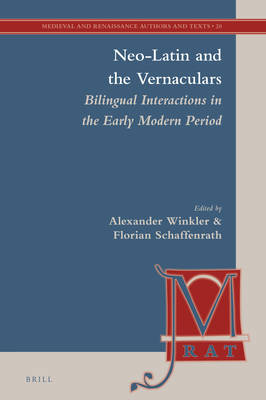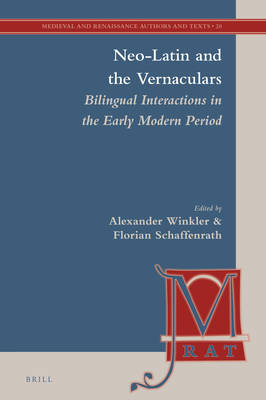
- Afhalen na 1 uur in een winkel met voorraad
- Gratis thuislevering in België vanaf € 30
- Ruim aanbod met 7 miljoen producten
- Afhalen na 1 uur in een winkel met voorraad
- Gratis thuislevering in België vanaf € 30
- Ruim aanbod met 7 miljoen producten
Zoeken
Neo-Latin and the Vernaculars
Bilingual Interactions in the Early Modern Period
€ 242,95
+ 485 punten
Omschrijving
The early modern world was profoundly bilingual: alongside the emerging vernaculars, Latin continued to be pervasively used well into the 18th century. Authors were often active in and conversant with both vernacular and Latin discourses. The language they chose for their writings depended on various factors, be they social, cultural, or merely aesthetic, and had an impact on how and by whom these texts were received. Due to the increasing interest in Neo-Latin studies, early modern bilingualism has recently been attracting attention. This volumes provides a series of case studies focusing on key aspects of early modern bilingualism, such as language choice, translations/rewritings, and the interferences between vernacular and Neo-Latin discourses.
Contributors are Giacomo Comiati, Ronny Kaiser, Teodoro Katinis, Francesco Lucioli, Giuseppe Marcellino, Marianne Pade, Maxim Rigaux, Florian Schaffenrath, Claudia Schindler, Federica Signoriello, Thomas Velle, Alexander Winkler.
Contributors are Giacomo Comiati, Ronny Kaiser, Teodoro Katinis, Francesco Lucioli, Giuseppe Marcellino, Marianne Pade, Maxim Rigaux, Florian Schaffenrath, Claudia Schindler, Federica Signoriello, Thomas Velle, Alexander Winkler.
Specificaties
Betrokkenen
- Uitgeverij:
Inhoud
- Aantal bladzijden:
- 366
- Taal:
- Engels
- Reeks:
- Reeksnummer:
- nr. 20
Eigenschappen
- Productcode (EAN):
- 9789004384866
- Verschijningsdatum:
- 15/11/2018
- Uitvoering:
- Hardcover
- Formaat:
- Genaaid
- Afmetingen:
- 157 mm x 236 mm
- Gewicht:
- 521 g

Alleen bij Standaard Boekhandel
+ 485 punten op je klantenkaart van Standaard Boekhandel
Beoordelingen
We publiceren alleen reviews die voldoen aan de voorwaarden voor reviews. Bekijk onze voorwaarden voor reviews.







